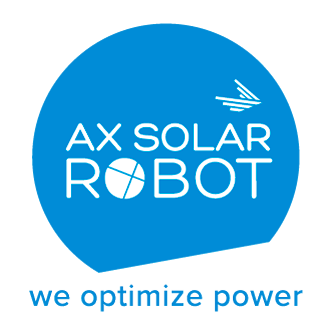Solar panel cleaning: how much does it cost?
Photovoltaic module maintenance can either be carried out directly by the plant operator/owner, or entrusted to a third party (operation & maintenance company or directly to a service provider specializing in cleaning). Increasingly, solar panel installers are rounding out their offer with service contracts that include regular plant cleaning.
A classic and most widespread invoicing scheme values cleaning according to the surface area to be cleaned in sqm: in France, and depending on the case (see below), prices can vary between 0.4 and 2€HT/sqm on roofs, and between 0.3 and 1€HT/sqm for ground-mounted power plants.
The different options available for solar panel cleaning
Different options may or may not be proposed and retained for cleaning (depending on requirements, and on the companies consulted):
-Water treatment: depending on the region, water can be more or less hard. If cleaning is carried out in fine weather and windy conditions, the rapid drying of poorly drained water can leave traces of limescale, which is counterproductive. Moreover, pure water has cleaning and descaling properties that contribute to the mechanical action of the brushes and guarantee optimum cleaning quality.
-Water heating: here too, the objective is twofold. On the one hand, to protect the modules, particularly during summer cleaning: the temperature delta recommended by most manufacturers is around 15 to 20°C. In summer, modules can quickly reach surface temperatures in excess of 50°C (up to 70-75°C): unheated water can damage modules through thermal shock, in particular damaging the seals between glass and frame. The second advantage lies in cleaning efficiency, as hot water has a highly effective degreasing effect.
The addition of certified biodegradable chemicals may be necessary as a last resort, on a case-by-case basis (proximity of the PV plant to sites such as cement works, or heavily encrusted lichens following prolonged non-maintenance).
-Number of brush passes: a “curative” cleaning (the plant has not been cleaned for several years) may require several passes and therefore a longer intervention time/cost, as opposed to a “maintenance”/annual cleaning.
Go through a cleaning company
The costing of solar panel cleaning operations requires a multi-factorial approach:
-What type of installation is involved? On roofs, for example, access and lifting equipment such as gondolas are often required. Access and slope are also important to characterize as early as possible. For ground-mounted plants, factors such as the presence of overhead cables or the spacing between rows are decisive in determining the size of the equipment required, and therefore the cost of the worksite.
-Is water supplied on site? If so, the pumping and distribution elements are linked to the characteristics of the site to be cleaned, and may influence the costs associated with the job. If water has to be brought to the site, storage and associated logistics must be planned in advance and included in the job estimate.
-What is the total surface area for a given site? The larger the site, the lower the costs such as travel.
-What is the total contracted surface area, and over what period? Between a 100kW roof to be serviced every 3 years, with no assurance of renewing the contract, and a solar field of several hectares with a multi-year maintenance contract, the cost of servicing is bound to differ considerably.
-When to clean? Certain periods may be more favourable than others for cleaning PV power plants (e.g. spring/after pollen for performance, autumn for wintering), so it’s important to plan ahead! But “off-peak” periods are still very interesting from a yield point of view, with tariff conditions that may be more flexible… In the event of a sandstorm (which occurs more and more frequently) and the need for rapid intervention, nothing is guaranteed!
Invest in a solar panel cleaning robot
Choosing not to use a service provider to clean your photovoltaic installations and investing in equipment can make sense, depending on the situation:
-Not wanting to be dependent on intervention times, particularly for power plants that are subject to performance monitoring linked to fouling, where the whole point lies in being able to restore the situation quickly.
If several interventions are to be carried out each year, it may be more cost-effective to invest than to outsource.
-in farming environments (gaec, cuma, etc.), investment and operation by a group is already effective and mastered for other types of equipment.
-to benefit from “permanent” cleaning equipment, without having to worry about either organizing subcontracting or carrying out the cleaning, while having the cleanest possible modules and optimized performance, all year round (link to Spider page).
Which option is best for cleaning your solar panels?
It’s clear that outsourcing cleaning services will be advantageous if you have a number of geographically dispersed plants and you want to call on a specialist in the field, even if it’s still possible to have one or more dedicated, trained and equipped teams able to intervene on your own behalf or on behalf of third parties.
For more information and details about your situation and your cleaning challenges, please contact us directly here (link to “information request” page).



